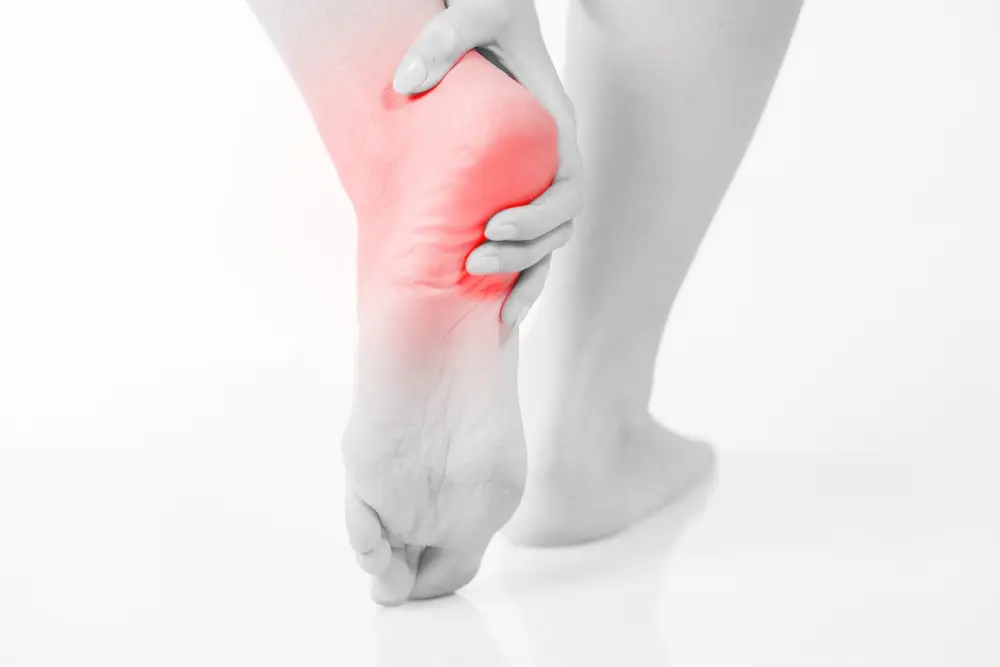
A heel spur (also called a calcaneal spur) can be the source of many foot pains. Although a heel spur may be benign and may not necessarily affect your daily routine, it is important to know how to detect it. In fact, this symptom can be a precursor to plantar fasciitis and thus become quite painful!
We must remember that a heel spur (or calcaneal spur) is a bony excrescence on the lower surface of the calcaneus (heel bone) at the attachment of the long plantar ligament. That’s why it is important to consult a podiatrist promptly to ensure that this issue does not worsen over time.
In order to avoid pain in your heel or elsewhere on your foot, you must not wait to schedule a preventive examination with your podiatrist!
Causes and symptoms of heel spurs
Heel spurs appear as a bone calcification, often caused by inflammation of the plantar fascia, a ligament located under the foot.
The calcaneal spur usually occurs in cases where the plantar fascia is overworked, causing stretching and tension in the heel. This tension sometimes causes heel pain that usually occurs in the morning when you take your first steps after waking up.
This is a phenomenon that occurs especially among athletes, especially runners. The repeated impact of a foot on the ground while running can cause tension. You also increase your chances of having heel spurs if you often walk or run barefoot.
Other causes can also come into play with this formation of bony excrescence, including:
- obesity
- arthritis
- genetics
Your daily activities can also play a role, for example, working in an industry sector that requires a lot of physical activity.
Not to be confused with plantar fasciitis
Heel spurs are often accompanied by another foot condition, called plantar fasciitis, which usually causes sharp heel pain. Pain is often felt when a heel spur is associated with plantar fasciitis.
Plantar fasciitis occurs when the plantar fascia (him again!) is overstretched or even broken. The plantar fascia supports the arch of the foot, and stretching it can cause pain. Although they are associated, heel spurs and plantar fasciitis are two different conditions, and must not be confused.
Your podiatrist: a major ally to combat heel spurs
In order to alleviate your heel pain, your podiatrist is the best professional to call upon. They are able to relieve the pain and find a solution to your problem. They will also be able to take X-rays of your feet to identify any anomalies.
Below are several solutions to help alleviate pain caused by heel spurs:
- plantar orthotics
- therapeutic tape
- laser treatment
- shockwave therapy
In addition, depending on the individual case, various therapeutic physical therapy and cortisone injections can help to relieve the pain.
Podiatry is the perfect way to prevent pain in your heels or anywhere on your feet.
We always go farther with healthy feet!
Would you like to learn more about heel spurs?
Consult PiedRéseau for answers to all your questions.